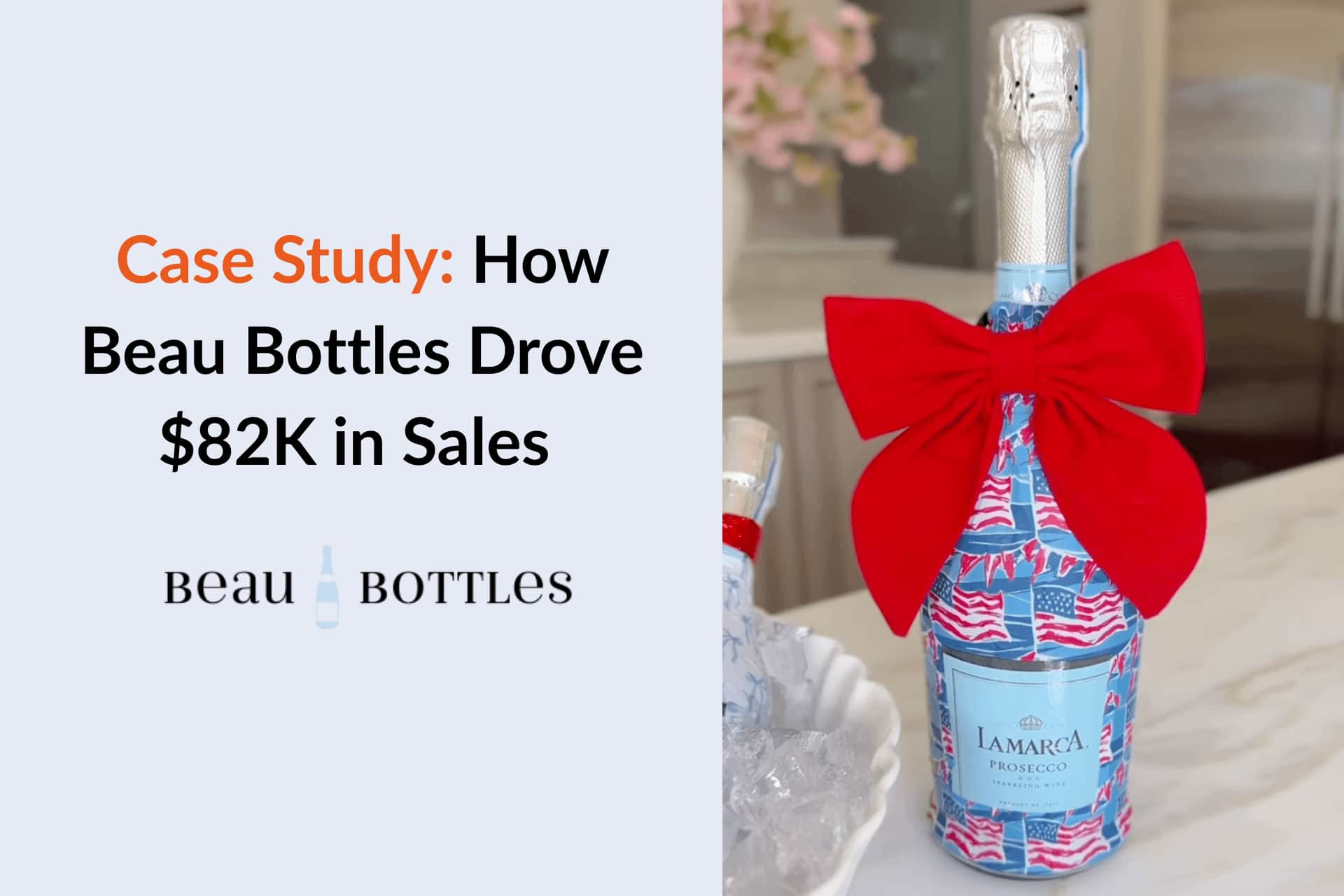





Alphin has gained attention in the influencer marketing space, particularly for its quick campaign setup and influencer discovery tools. However, many users have pointed out recurring issues that push them to explore alternatives.
The most common cons include limited analytics that make ROI tracking difficult, restricted integrations with eCommerce and CRM systems, and high pricing tiers that don’t scale well for smaller brands. These shortcomings leave businesses seeking platforms that can deliver more robust features, better value, and a smoother user experience.
The top 10 Alphin alternatives we’ll explore in this article are:
When considering why many brands are exploring Alphin alternatives, it’s important to highlight specific recurring issues voiced by users on Reddit, G2, and other review forums. These concerns reveal where the platform falls short and why competitors are gaining traction.
A major frustration for users is that Alphin’s analytics and reporting features are too basic to provide actionable insights. Many reviews note that real-time tracking is inconsistent, and ROI attribution from influencer campaigns to actual sales is often unclear. This lack of precision makes it difficult for marketers to optimize campaigns effectively.
Another commonly cited drawback is Alphin’s weak integration with the tools most brands rely on daily, such as Shopify, WooCommerce, or affiliate platforms. Without seamless connections to these systems, users are left to manage tracking and payments manually, which not only slows workflows but also increases the risk of errors and inefficiencies.
Many smaller and mid-market businesses express frustration with Alphin’s pricing model, describing it as rigid and expensive for what it offers. Extra fees for advanced features or limits on influencer access make it challenging for growing brands to scale their influencer programs without stretching their budgets uncomfortably.
Finally, Alphin’s customer support and onboarding receive mixed feedback, with smaller brands in particular reporting a lack of personalized assistance. Some users describe the onboarding process as rushed, leaving them without a clear understanding of advanced features, while support responsiveness can feel slow compared to other platforms that offer more proactive guidance.
Our comparison focuses on several key aspects:
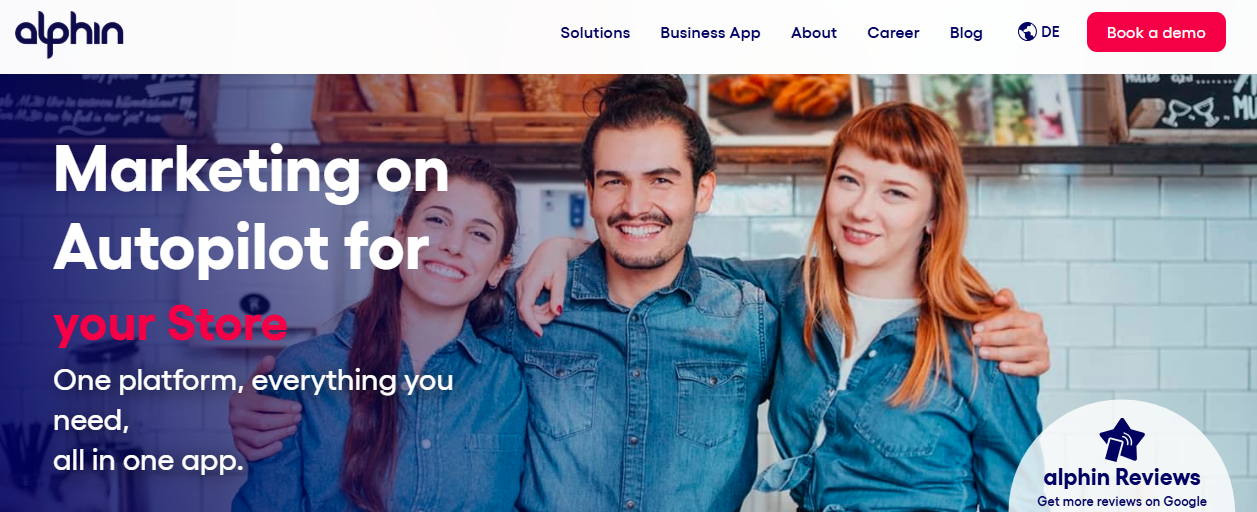
Best For: Alphin is best for local businesses (restaurants, cafés, salons, and small retailers) that want an affordable, turnkey way to boost awareness through neighborhood influencers, online reviews, and automated local marketing campaigns. It’s designed for business owners with limited time or technical expertise.
Platform Coverage:
Pricing: Not publicly disclosed. Based on our research, Alphin operates on a SaaS subscription model, but exact tiers are not transparent.
Reviews: No verified public reviews available on major platforms such as G2, Capterra, or Trustpilot.
Ease of Use (UX/UI): Alphin is designed to be intuitive for non-technical local business owners. The mobile app provides one dashboard for everything—campaigns, posts, reviews, and reporting. Tools like the Dealmap and daily inbox reports automate repetitive tasks, keeping manual setup minimal. Businesses can choose “autopilot” or manual control, depending on how hands-on they want to be.
Customer Support: Support is delivered via in-app chat, email, and phone, plus a free consultation during onboarding.

Best For: Influencer Hero is best for D2C eCommerce brands and growing businesses that want an all-in-one platform to manage influencer discovery, outreach, gifting, affiliate programs, and performance tracking at scale.
Platform Coverage:
Pricing: Influencer Hero offers flexible pricing plans to accommodate growing brands. All plans include core features and can scale as the influencer program grows.
Reviews: 5.0 / 5.0 (Capterra)
Ease of Use (UX/UI): Users consistently highlight Influencer Hero’s clean interface and intuitive design, making it easy for even non-technical teams to run campaigns quickly. With drag-and-drop workflows, automated outreach, and customizable email templates, brands save hours of manual work each week. The dashboard gives a streamlined overview of campaign progress, ensuring all influencer communications, deliverables, and ROI metrics are in one place.
Customer Support: One of Influencer Hero’s strongest advantages is its premium customer support. All plans include a dedicated account manager from day one, with real-human live chat and email support available 24/7. The platform also provides detailed onboarding, an in-platform help center with video tutorials, and Pro plan users gain access to a private Slack channel for continuous, priority support.
When comparing Alphin with Influencer Hero, the biggest difference lies in scope and flexibility. Alphin focuses primarily on campaign management but falls short in areas like automated outreach, influencer storefronts, and integrated affiliate tracking. In contrast, Influencer Hero delivers an all-in-one solution, covering everything from discovery and gifting to analytics and payments.
Pricing also favors Influencer Hero for scaling brands. Alphin often requires higher customization costs and lacks entry-level flexibility, while Influencer Hero offers transparent plans starting at $649/month, with scalability up to enterprise-level needs. This makes Influencer Hero not just more feature-rich, but also more cost-efficient for D2C eCommerce teams.
Finally, Influencer Hero stands out for its customer support and user experience, offering dedicated account managers, live chat, and onboarding resources that Alphin does not consistently provide. For brands prioritizing both ROI and ease of execution, Influencer Hero is a stronger, future-proof choice.
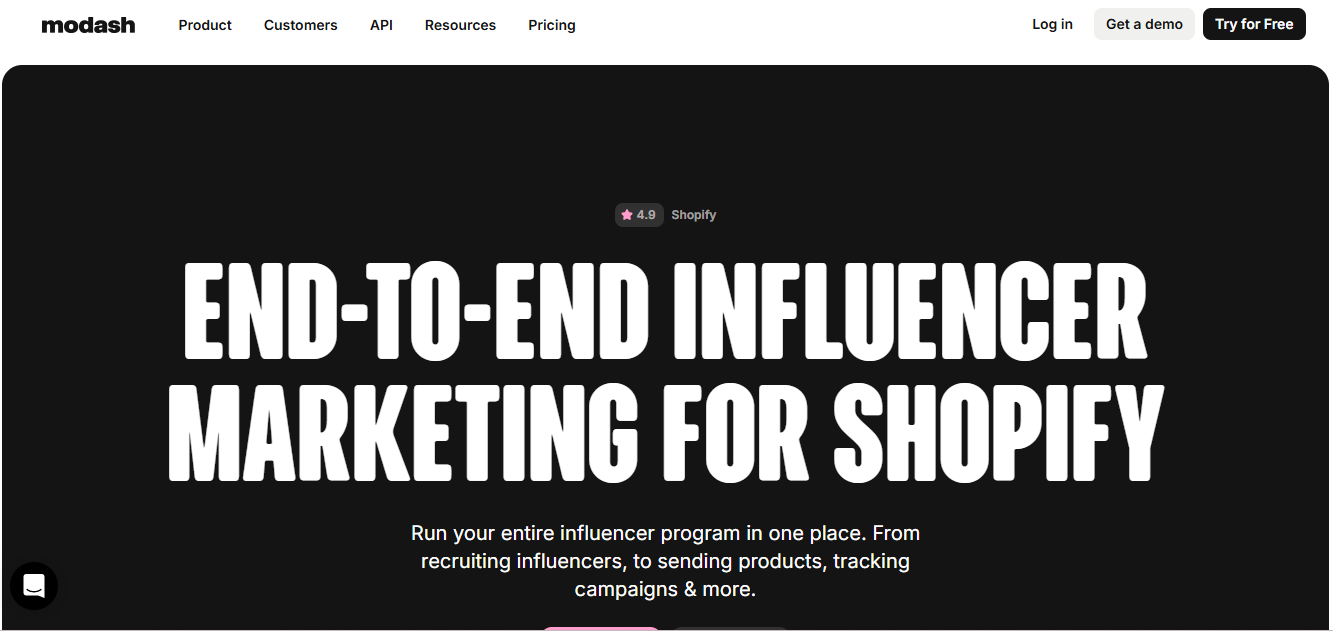
Best For: Modash is best for eCommerce brands and agencies that want to run scalable influencer programs with a strong focus on discovery, affiliate automation, and Shopify integration. It’s especially useful for DTC brands that need to combine influencer discovery, campaign tracking, and affiliate payouts in one streamlined tool.
Platform Coverage:
Pricing: There are different plans and options.
Reviews: 4.7/5 (G2)
Ease of Use (UX/UI): Users consistently highlight Modash’s clean and intuitive dashboard. The platform simplifies the influencer workflow from search to campaign tracking, making it easy to filter, analyze, and contact influencers in bulk. The Shopify gifting integration reduces manual back-and-forth, and outreach templates streamline email campaigns.
Customer Support: Modash provides personalized onboarding and ongoing assistance, often described as responsive and proactive. Brands get direct communication channels (email, support chat, and sometimes WhatsApp with account managers). Users appreciate the support team’s expertise in influencer marketing, which helps troubleshoot issues like filtering, campaign setup, or affiliate tracking. Some note that response times vary during peak demand, but overall feedback is very positive.
While both Alphin and Modash are influencer marketing platforms, their positioning is very different. Alphin focuses on local businesses—restaurants, cafés, salons—offering simple, automated workflows like its Dealmap app for connecting with local influencers. Pricing is not publicly disclosed, requiring demos and custom quotes. This makes Alphin a strong choice for SMBs looking for local awareness and review management, but less ideal for global or eCommerce-heavy campaigns.
Modash, on the other hand, is built for eCommerce brands and agencies. Its transparent SaaS pricing starts at $199/month (Essentials) and $499/month (Performance), with enterprise options available. It offers Shopify-native integrations, bulk outreach, and affiliate automation, which Alphin lacks. However, Modash is limited by being Shopify-only, whereas Alphin supports a wider set of local business use cases.
Choose Alphin if you’re a local business wanting turnkey local influencer and reputation marketing. Choose Modash if you’re an eCommerce brand on Shopify seeking scalable influencer discovery, outreach, and affiliate management.

Best For: Upfluence is best for eCommerce brands, especially those on Shopify, WooCommerce, and Magento, that want to streamline influencer collaborations with integrated affiliate tracking and sales attribution. It’s also a strong choice for agencies managing multiple brands who need scalable influencer marketing solutions.
Platform Coverage:
Pricing:
Reviews: 4.5/5 (G2)
Ease of Use (UX/UI): Users note that Upfluence has a clean and professional interface, though some report that the dashboard can feel overwhelming due to the volume of features available. The influencer search tool is praised for its precision, but onboarding can require time to fully leverage the advanced functionality. Overall, the platform is powerful but comes with a moderate learning curve.
Customer Support: Customer support is generally rated positively, with users highlighting responsive onboarding teams and helpful account managers. However, some reviews mention that support availability varies depending on the subscription tier, with higher-paying plans receiving faster and more proactive assistance. Documentation and tutorials are available, though users wish for more interactive training.
While Alphin is designed for local businesses such as restaurants, cafes, and salons, focusing on micro and nano influencers in local markets, Upfluence targets eCommerce brands and agencies with global scalability. This means Alphin excels for hyperlocal awareness, while Upfluence provides a broader reach with stronger integrations for online retail.
Another major distinction lies in pricing transparency. Alphin’s pricing is undisclosed and requires a demo, while Upfluence, though also not publicly listed, is often reported as expensive for smaller businesses, making it better suited to medium and large brands.
Finally, Alphin prioritizes automation for local influencer deals via its Dealmap app, while Upfluence delivers in-depth ROI and affiliate tracking with advanced integrations into Shopify and WooCommerce. For businesses seeking global reach and measurable revenue impact, Upfluence is the stronger choice, but for small, local brands with limited resources, Alphin may still fit better.

Best For: Captiv8 is best for enterprise brands and agencies that want to run large-scale, data-driven influencer campaigns with deep analytics and competitor intelligence. It’s particularly strong for global brands looking for comprehensive campaign management and detailed reporting.
Platform Coverage:
Pricing: There are different pricing options:
Reviews: 4.1/5 (G2)
Ease of Use (UX/UI): Users describe Captiv8’s platform as robust but complex. The interface offers advanced filtering, customizable reports, and detailed dashboards, which can be powerful but overwhelming at first. Larger teams appreciate its collaboration tools (chat with collaborators, approve/discard creators directly in profiles), but smaller businesses often note a steeper learning curve due to the platform’s enterprise-level depth
Customer Support: Customer support is a frequent point of criticism. Several users (both brands and creators) report slow response times and unresolved payment issues, as noted in community forums like Reddit. While onboarding is structured, many reviews mention that ongoing customer service is inconsistent and unresponsive, which can create friction for enterprise users expecting premium support.
Alphin and Captiv8 serve very different markets. Alphin is built for local businesses—restaurants, cafés, salons—providing affordable, automated influencer campaigns through its Dealmap app and review-generation tools. Pricing is undisclosed but designed to be accessible for SMBs, making Alphin ideal for localized marketing.
Captiv8, on the other hand, is positioned as an enterprise solution with pricing starting at $25K annually, plus onboarding fees and optional $20-30K/month for Storefronts and Affiliates. It delivers global-scale influencer discovery (15M+ creators), competitive intelligence, and advanced analytics, but comes with steep costs and a learning curve.
In short: Choose Alphin if you’re a local business wanting easy, cost-effective influencer and review marketing. Choose Captiv8 if you’re an enterprise brand with the budget for advanced analytics, competitive tracking, and global campaigns.

Best For: CreatorIQ is best for large enterprises and global brands that need a scalable solution to manage influencer marketing at scale. Its robust infrastructure supports Fortune 500 companies, agencies, and eCommerce businesses running complex multi-market campaigns.
Platform Coverage:
Pricing: There are different plans:
Reviews: 4.7/5 (G2)
Ease of Use (UX/UI): Users generally find CreatorIQ’s interface polished and professional, though some mention it has a steeper learning curve compared to lighter platforms. The dashboard is highly customizable, which makes it powerful but sometimes overwhelming for smaller teams. Most reviews highlight that once teams are trained, workflows become much more efficient.
Customer Support: CreatorIQ is praised for its dedicated customer success teams and onboarding programs. Users highlight strong account management and responsiveness for enterprise-level clients, though smaller teams sometimes feel support prioritization leans toward high-value accounts. They also provide extensive documentation, webinars, and community resources to bridge the gap.
When comparing Alphin with CreatorIQ, the most striking difference lies in target audience and pricing. Alphin positions itself as a more accessible solution for small to mid-sized brands, while CreatorIQ caters to enterprise-level organizations with global operations. This makes CreatorIQ considerably more expensive but also far more scalable.
In terms of features, CreatorIQ offers advanced fraud detection, BI integrations, and brand safety tools that Alphin lacks. These capabilities are critical for multinational corporations dealing with large budgets and reputation-sensitive campaigns. Alphin, on the other hand, focuses on usability and affordability, making it better for growing brands with limited resources.
For businesses deciding between the two, the choice comes down to budget and campaign scale. Brands needing enterprise-grade customization, reporting, and fraud detection should lean toward CreatorIQ, while those wanting a more cost-effective and streamlined platform may find Alphin more suitable.

Best For: HypeAuditor is best for brands, agencies, and eCommerce companies that want data-driven influencer discovery, fraud detection, and campaign analytics across multiple platforms. It’s particularly strong for businesses prioritizing authenticity checks and in-depth audience insights.
Platform Coverage:
Pricing: HypeAuditor’s pricing is customizable, with the standard “Business” plan starting at around $10,000/year. Pricing can be adjusted based on the number of reports, active campaigns, and platform usage. They also offer a 24–48 hour free trial for new users.
Reviews: 4.6/5 (G2)
Ease of Use (UX/UI): Users describe HypeAuditor as a powerful but data-heavy platform. Its dashboard provides deep analytics on audience demographics, brand affinity, and authenticity scores, which advanced users find extremely valuable.
Customer Support: HypeAuditor provides onboarding support and customizable training packages. Users highlight responsive customer support, especially for enterprise accounts, with email and in-platform assistance. Still, some reviews note that the complexity of the tool means support is often needed, particularly for smaller teams without prior influencer marketing experience.
While both Alphin and HypeAuditor offer influencer marketing solutions, their target audiences and pricing differ significantly. Alphin is built for local businesses—restaurants, cafés, salons—providing affordable, automated influencer campaigns via its Dealmap app, along with reviews and local ads. Its pricing is undisclosed but tailored to be accessible for SMBs.
HypeAuditor, by contrast, is a premium analytics and discovery platform for agencies and larger brands. Its entry-level Business plan costs ~$10K/year, and it emphasizes data integrity, fraud detection, and advanced campaign reporting. While Alphin focuses on simplicity and automation for local awareness, HypeAuditor prioritizes authenticity scoring and enterprise-grade analytics.
In short: Choose Alphin if you’re a small or local business looking for cost-effective influencer and review marketing. Choose HypeAuditor if you’re a larger brand or agency needing in-depth analytics, fraud detection, and scalable campaign tracking.

Best For: GRIN is best for eCommerce brands and DTC businesses that want to centralize influencer relationship management and scale ambassador-style campaigns. It’s particularly strong for brands that already run affiliate or gifting programs and want a platform that ties those efforts to revenue.
Platform Coverage:
Pricing:
Reviews: 4.5 / 5.0 (G2)
Ease of Use (UX/UI): Users often highlight GRIN’s clean and professional dashboard, which makes campaign tracking and influencer management straightforward. While the interface is powerful, some note that navigating its many features can feel overwhelming at first, especially for smaller teams. Once familiar, brands appreciate the workflow automation that reduces repetitive tasks.
Customer Support: GRIN receives praise for its dedicated account managers, who provide hands-on onboarding and campaign guidance. Their support team is responsive through email and chat, though some users mention slower turnaround times during peak campaign seasons. Overall, brands find their support team knowledgeable and proactive in helping maximize the platform.
Alphin focuses on local businesses like restaurants, cafes, and salons by connecting them with micro and nano influencers in their immediate area. Its strength lies in simplicity and affordability, with automated workflows like the Dealmap app for quick influencer activations. However, Alphin’s pricing isn’t transparent, and it lacks advanced tools for affiliate tracking or contract negotiation.
GRIN, on the other hand, is designed for eCommerce and DTC brands at scale, providing advanced CRM, affiliate code management, and deep integrations with Shopify and WooCommerce. While more expensive, it offers revenue attribution, robust analytics, and end-to-end campaign management, making it ideal for brands seeking measurable ROI rather than just local awareness.
In short, if you’re a local business aiming to grow through nearby influencer partnerships, Alphin provides a lightweight, budget-friendly solution. But for larger eCommerce brands that need enterprise-level features, ROI-focused analytics, and advanced affiliate management, GRIN is the stronger choice despite its higher cost.
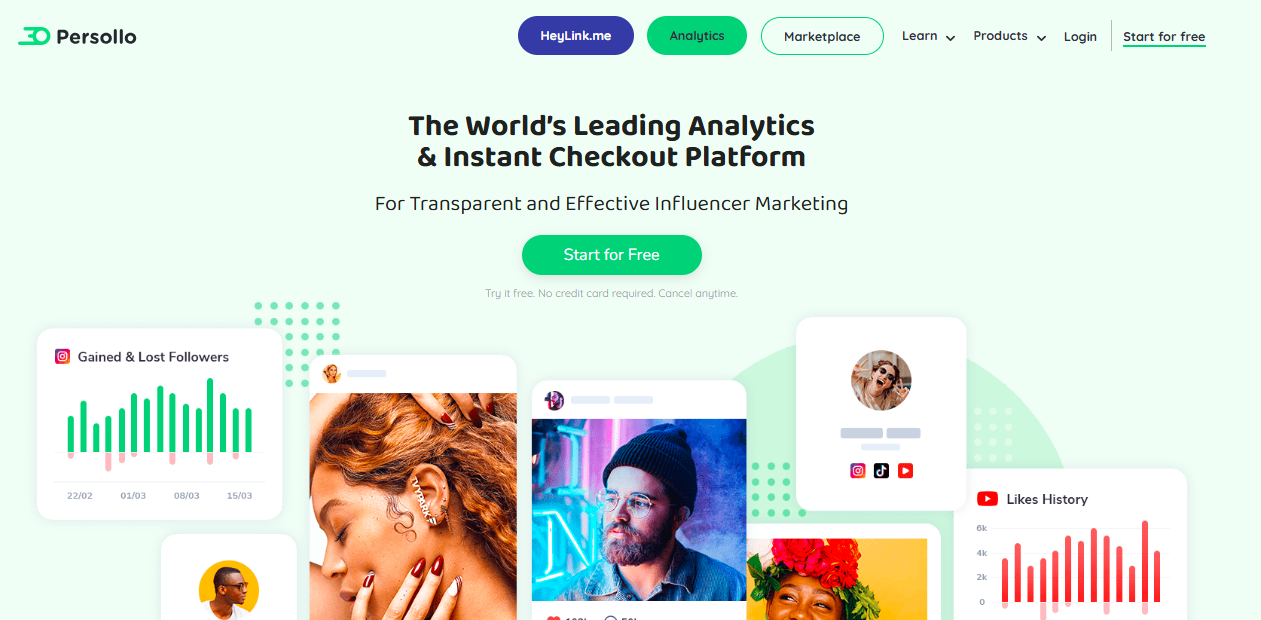
Best For: Persollo is best for eCommerce brands, creators, and boutique businesses that want to convert social media engagement into direct sales through instant one-click checkout. It is particularly effective for impulse-driven product categories like fashion, beauty, and lifestyle where seamless conversions matter most.
Platform Coverage:
Pricing: Based on our research, Persollo offers different plans and options.
Reviews: No verified public reviews available on major platforms such as G2, Capterra, or Trustpilot.
Ease of Use (UX/UI): Users highlight Persollo’s simplicity and speed, emphasizing how quickly instant checkout links can be launched without the need for a heavy eCommerce setup. Its design focuses on frictionless selling and instant monetization, making it accessible even to smaller businesses without technical expertise.
Customer Support: Publicly available details about Persollo’s support are limited, but enterprise customers gain access to dedicated support and custom services. For smaller tiers, customer feedback suggests that while the tool is easy to set up, clearer onboarding and live support channels could improve the overall experience.
When comparing Alphin vs Persollo, the main difference lies in their core focus. Alphin positions itself as a traditional influencer marketing CRM with campaign management, outreach, and analytics tools, while Persollo focuses heavily on instant checkout and social commerce, enabling creators to directly monetize posts.
In terms of pricing, Alphin requires a more structured subscription, whereas Persollo offers a free starter tier and a transaction-based pricing model that charges 3.9% + $0.30 per sale, making it more accessible for small brands and creators with lower budgets.
Users looking for a conversion-first tool will likely prefer Persollo, as its one-click checkout is proven to boost conversions by up to 300%. However, brands seeking an all-in-one influencer management solution with deeper CRM, reporting, and outreach features may find Alphin the stronger choice.
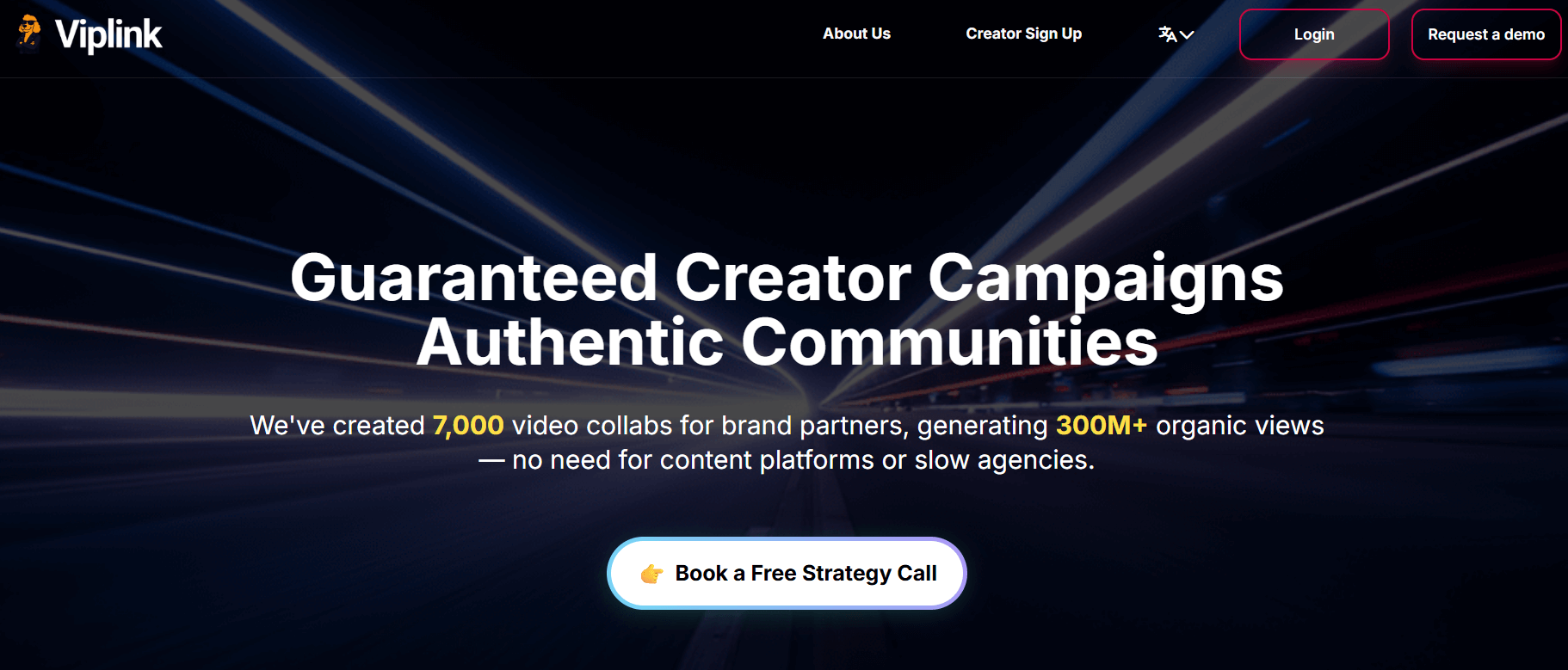
Best For: Viplink AI is best for eCommerce brands and D2C businesses that want to leverage AI-driven influencer discovery, campaign management, and content creation to scale their influencer and affiliate marketing strategies. It’s particularly suited for brands looking for automation and data-backed influencer selection.
Platform Coverage:
Pricing: No upfront fees; payment is only required once you approve creators and content. However, brands have to pay an additional fee—amount not publicly disclosed—based on what is paid to each creator.
Reviews: 4.4/5.0 (G2)
Ease of Use (UX/UI): Users mention that Viplink AI has a clean and modern interface that feels intuitive, especially when setting up campaigns or running influencer searches. The AI automations reduce manual effort, making it easier to shortlist creators, generate outreach templates, and track results. However, some note that due to the depth of its features, it can take a little time to explore everything the platform offers.
Customer Support: Viplink AI is known for its responsive support team, offering assistance through email, chat, and scheduled consultations. Clients highlight the proactive onboarding process and the availability of detailed documentation to help new users. Still, some users note that resolution times can be slower during peak campaign seasons when support demand is higher.
When comparing Alphin and Viplink AI, the most striking difference is in their market focus. Alphin is designed for local businesses such as restaurants, cafes, and salons, emphasizing neighborhood-level influencer campaigns with micro and nano-influencers. In contrast, Viplink AI caters to eCommerce and D2C brands looking for scale, providing AI-driven influencer discovery, contract automation, and affiliate tracking.
Pricing is another key differentiator. Alphin’s pricing is not publicly disclosed, requiring a consultation, and is geared toward local SMB budgets. Viplink AI, while also not fully transparent, tends to be positioned at a higher price point because of its AI automations, advanced analytics, and affiliate integrations. For businesses seeking a more tech-driven solution with automation, Viplink AI may justify the higher cost.
Ultimately, Alphin is best suited for hyper-local businesses that want easy-to-use, all-in-one marketing support, while Viplink AI is better for growth-focused eCommerce brands that require automation, advanced analytics, and affiliate campaign scalability.
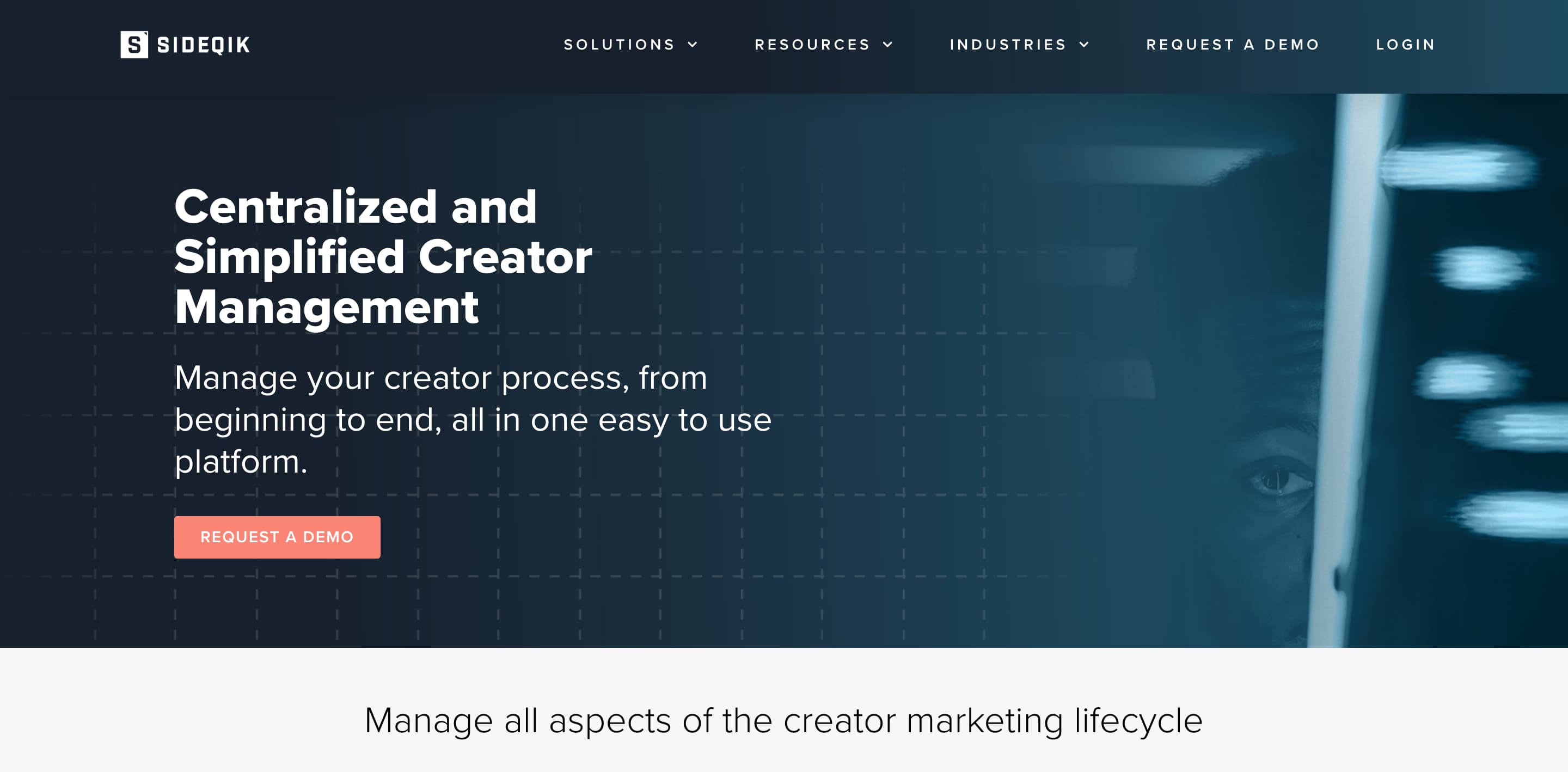
Best For: Sideqik is best for mid-sized and large brands that want to run end-to-end influencer campaigns with a strong focus on influencer discovery, campaign automation, and analytics. It is particularly suited for brands seeking to integrate influencer marketing directly with their existing marketing stack and eCommerce operations.
Platform Coverage:
Pricing: Undisclosed.
Reviews: 4.2 / 5.0 (G2)
Ease of Use (UX/UI): Users often highlight that Sideqik’s dashboard is clean and easy to navigate, offering a unified space for campaign planning, influencer management, and reporting. However, some reviewers note that while the basics are intuitive, more advanced features require onboarding and training to unlock their full potential.
Customer Support: Sideqik provides responsive customer support with dedicated account managers, ensuring brands receive help during setup and ongoing campaigns. Many users report positive experiences with training sessions, onboarding support, and live guidance.
When comparing Alphin and Sideqik, the differences become clear in terms of target audience and campaign scale. Alphin is built for local businesses such as restaurants, salons, and cafes that want an easy-to-use tool to connect with micro and nano influencers nearby. In contrast, Sideqik caters to mid-sized and enterprise brands running large-scale influencer campaigns that demand advanced discovery, analytics, and integrations.
Another major distinction lies in pricing transparency. Alphin does not disclose its pricing publicly and is tailored toward affordable SaaS subscriptions for small businesses. Sideqik, however, operates on an enterprise pricing model with custom quotes, making it potentially less accessible for small brands but offering far more flexibility for large ones.
Ultimately, brands should choose Alphin if they are local and resource-constrained, looking for automation and ease of use, while Sideqik is the better option for companies needing deep analytics, enterprise-grade integrations, and scalable influencer campaigns.
Alphin positions itself well for local businesses and smaller brands wanting simple influencer activations, but it can feel limited in advanced features like analytics, outreach automation, and integrations.
Competitors such as Upfluence, CreatorIQ, GRIN, and Sideqik provide more robust functionality for larger brands, particularly those running multi-channel influencer campaigns at scale. These platforms stand out for their advanced reporting, flexible integrations, and enterprise-grade features, though they often come with higher pricing and steeper learning curves.
Among all these options, Influencer Hero emerges as one of the best alternatives, offering an all-in-one influencer marketing solution with AI-powered discovery, automated outreach, a built-in CRM, detailed analytics, and UGC management. If you’re looking to scale your influencer marketing efforts with a platform that balances power and simplicity, booking a demo with Influencer Hero is a great next step to see how it can support your growth.

Many users turn to Alphin alternatives because they find Alphin’s analytics and reporting limited, its automation features less advanced, and integrations with eCommerce platforms restricted. If you’re running more complex campaigns or need deeper insights, platforms like Influencer Hero, CreatorIQ, and GRIN provide more robust solutions.
For eCommerce brands, Influencer Hero is one of the best alternatives to Alphin. It offers Shopify and WooCommerce integrations, affiliate tracking, and AI-powered influencer discovery. This makes it easy to run campaigns that directly drive measurable sales.
Enterprises often look for platforms with scalable CRM tools, advanced analytics, and multi-channel campaign management. CreatorIQ and Captiv8 are strong choices, but Influencer Hero also stands out because it combines enterprise-grade features with a highly intuitive interface and dedicated account managers for every client.
Alphin is positioned as a cost-effective entry tool, but it lacks many advanced capabilities included in competitors. Alternatives like GRIN and Upfluence may come with higher price points, but they also deliver greater automation, integrations, and managed services. Influencer Hero offers flexible pricing tiers so both small and large brands can access a full-stack solution.
Choosing the right Alphin alternative depends on your specific needs and priorities. Consider factors such as the platforms your target audience is most active on, the features most critical to your campaigns (e.g., influencer discovery, CRM, analytics), and your budget. Additionally, think about whether you need agency support or prefer a solely software-based solution. Evaluating each alternative based on these criteria will help you find the best fit for your influencer marketing objectives.



Schedule a Demo with one of our media experts below.